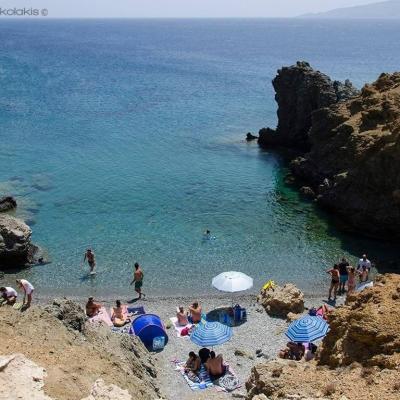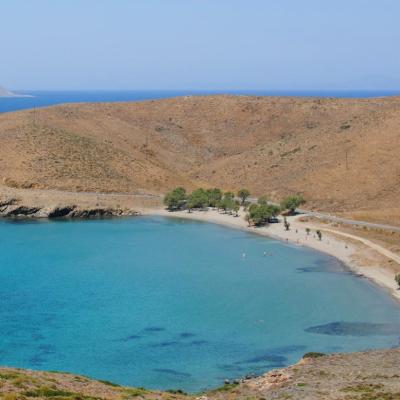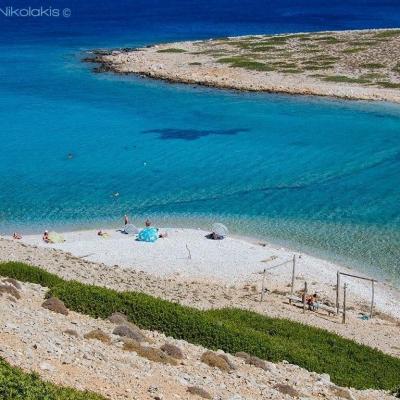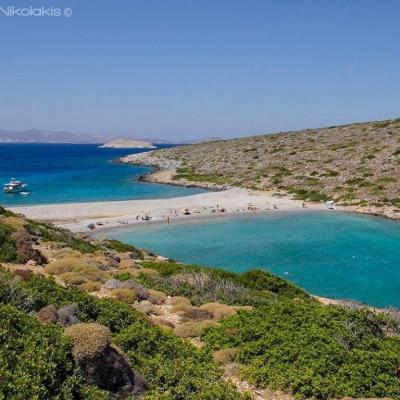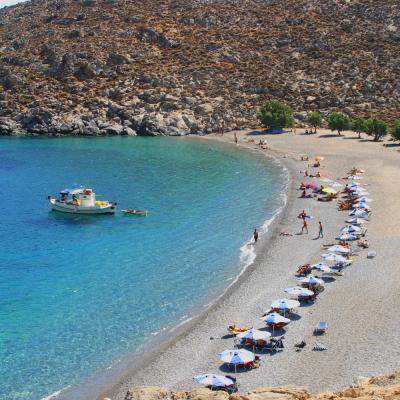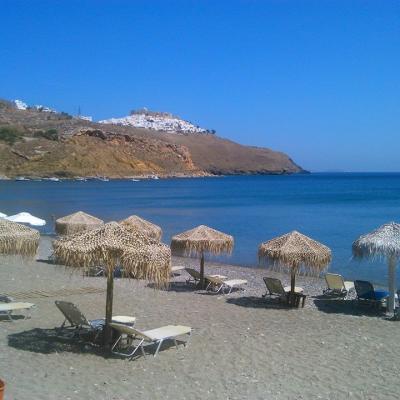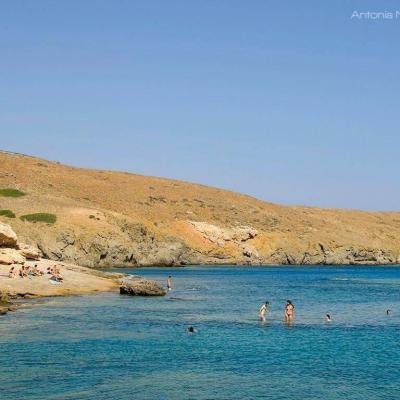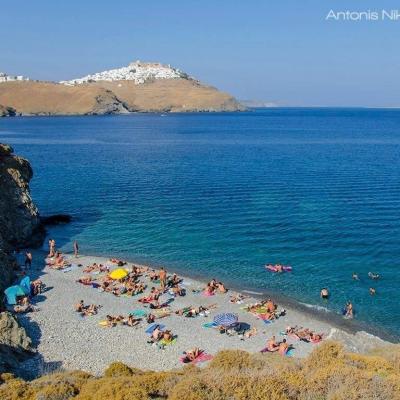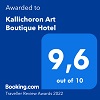ASTYPALEA
Astypalea can’t be described in words that will give it real justice. It preserves tradition but blends a cosmopolitan air, perfect for those that seek a unique destination. The charming settlement spreads out from the dominant Venetian Castle to the yacht marina at Pera Yalos. The windmills give a distinct colour to the pretty settlement. The magnificent architecture indulges the visitor to explore the narrow labyrinth streets with the small picturesque neighbourhoods.
The many aspects of this unique and truly romantic island with the beautiful beaches, the glorious sunrise and the deep blue coastlines will fascinate you and invite you to explore its beauties year after year.
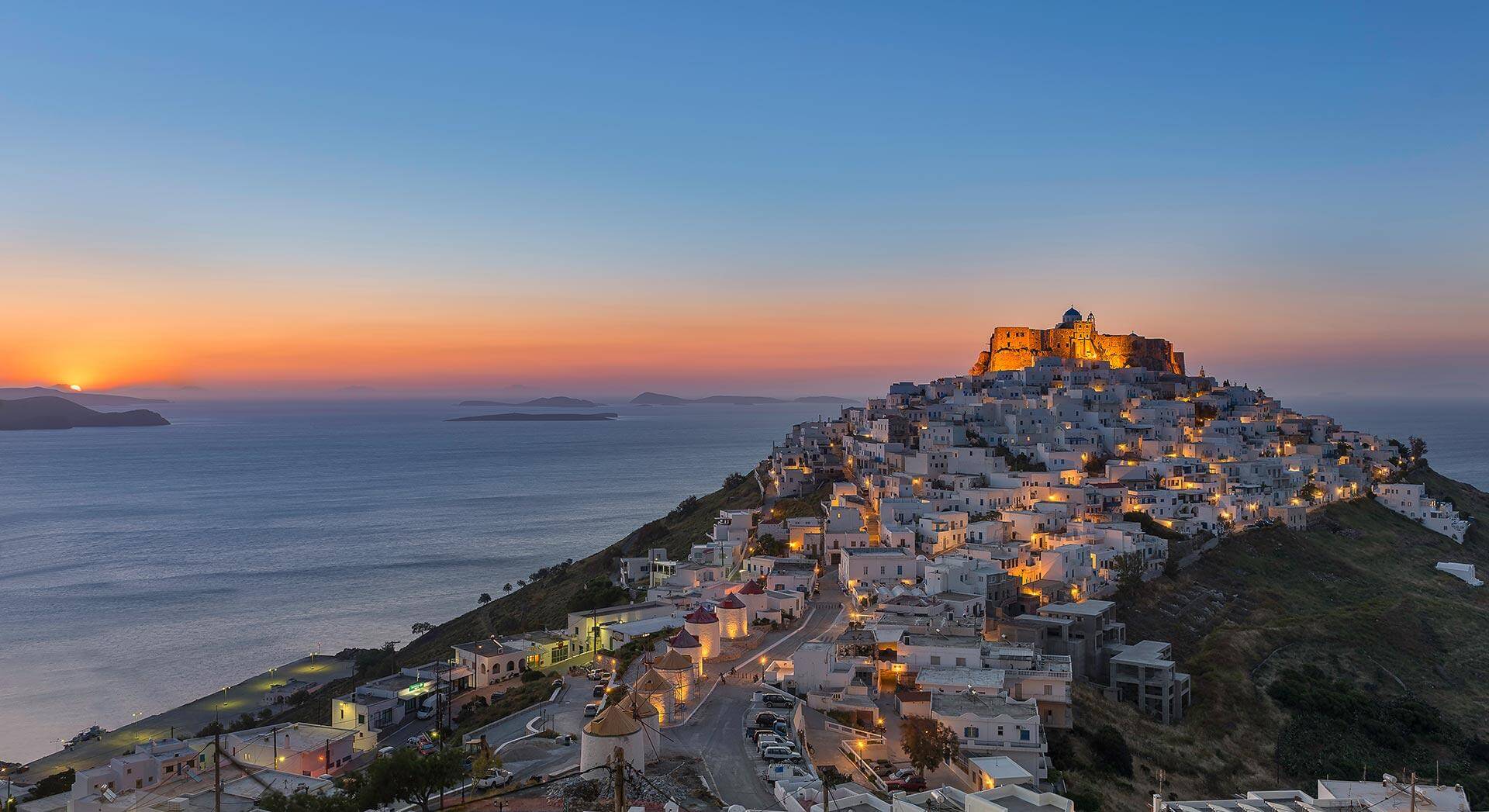
VILLAGES
Astypalea (meaning “old city”) is the “bridge” between Cyclades and Dodecanese, combining elements from both island groups. Covering an area of 97 sq.km and with a coastline of 110 km, Astypalea is the fourth largest and the westernmost island of the Dodecanese. When considering the area of the nearby islets, its total area reaches 128 sq.km. The island is divided into the Inner and Outer Island by a sandy strip of land 100 meters long, "Steno". Without this strip, Astypalea would be two separate neighboring islands.
The villages with their chapels, archaeological treasures, rich history and local traditions, welcome every year numerous visitors willing to explore the hidden beauties of the island.
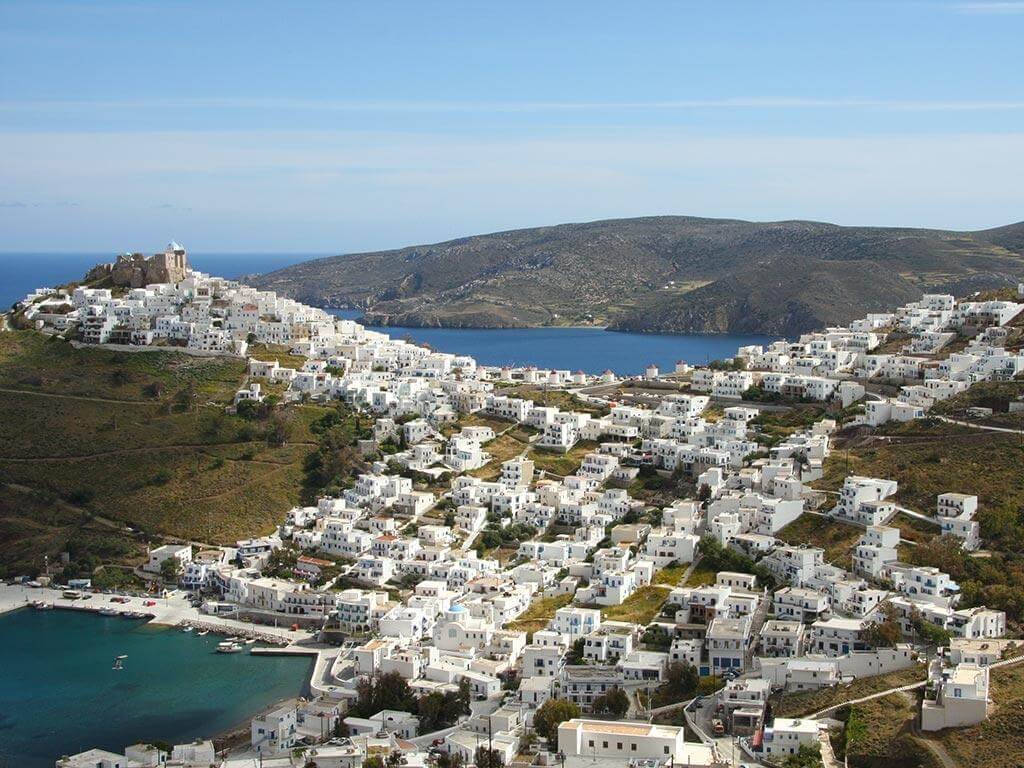
Chora and Pera Yalos
Until the 19th century, Chora was the only settlement of the island. It is built on a peninsula with the Venetian Castle of Querini standing proud on the top. Most of the island’s life is concentrated there.
Pera Yalos with the yacht marina is the seaport of Chora. In the old days and as the centuries progressed, little white houses began to appear outside the walls of the Castle and reached the port of Pera Yalos.
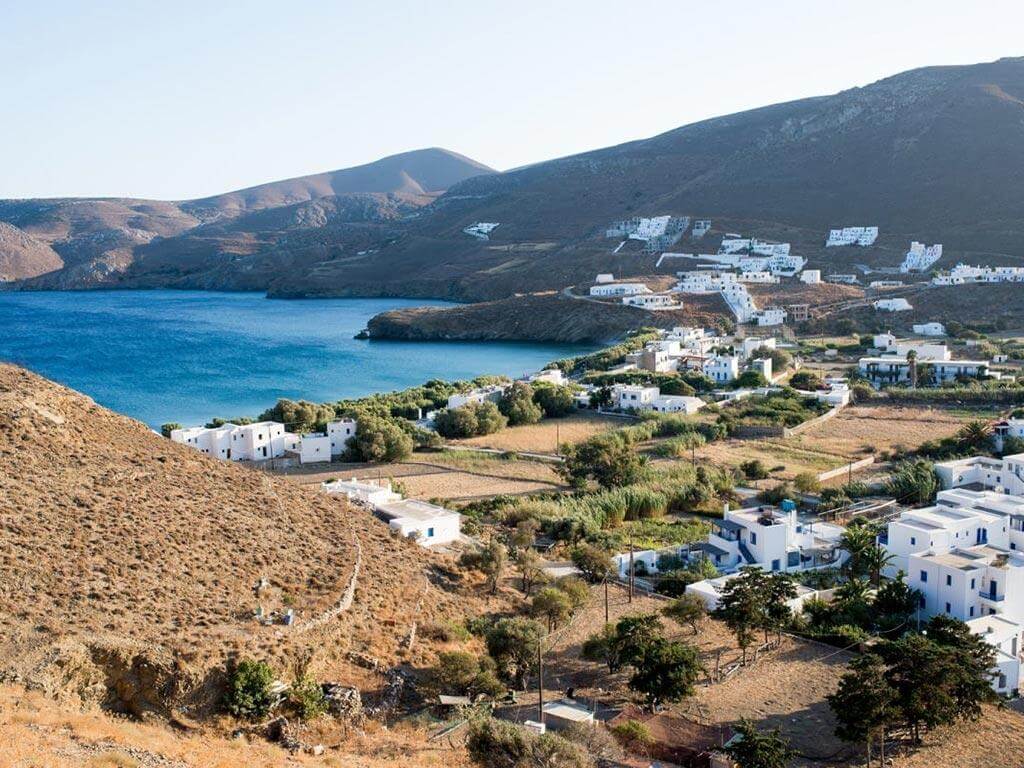
Livadi
Livadi village is the fertile valley of the island and the summer resort from the locals. Citrus groves, pistachio trees, vegetable gardens and vines stretch the length of the creek running through the valley.
The gardens and courtyards of the houses are filled with flowers of all kinds creating a palette with bursts of colour. It is a very beautiful area with an equally beautiful beach with various cafes and tavernas.
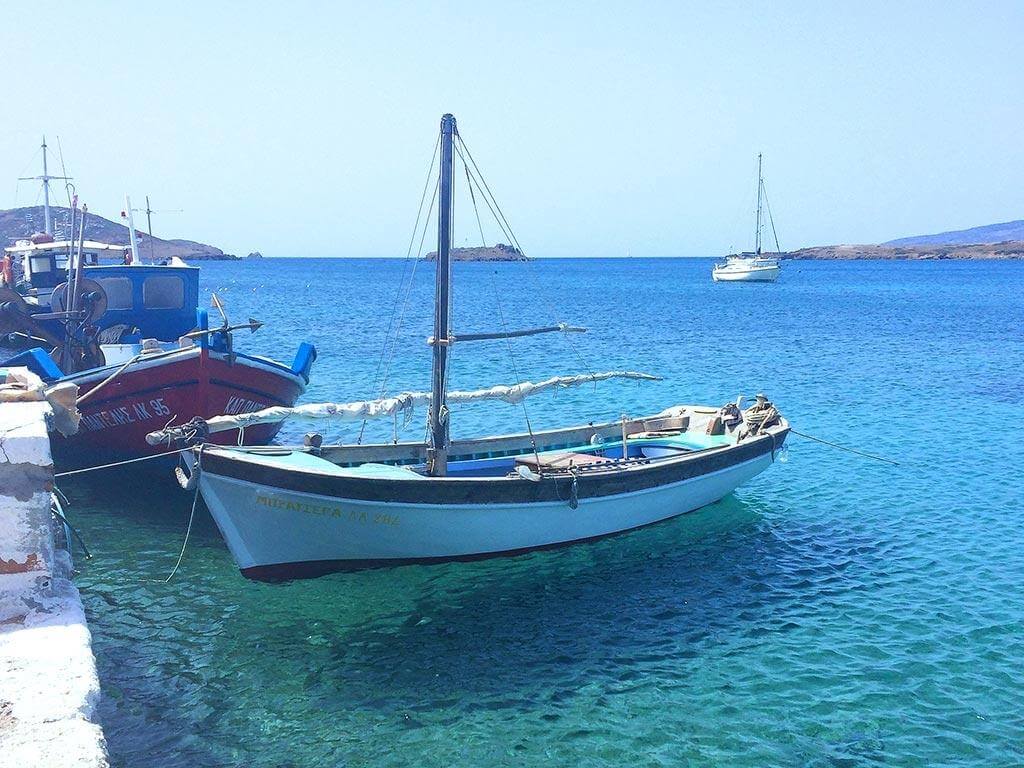
Analipsi or Maltezana
Analipsi, also known as Maltezana, is a seaside village in the outer part of the island with a beautiful sandy beach and a long jetty for fishing boats. Located approximately 9 km from Chora, it was named after the Maltese pirates, who pillaged the Aegean and found refuge in the island's sheltered bays. The fearful Ottoman pirate Hayreddin Barbarossa, who secured Ottoman dominance over the Mediterranean during the mid-16th century, conquered the island of Astypalea in 1537 and was using the favorable position of the island and especially Maltezana bay for his naval victories.
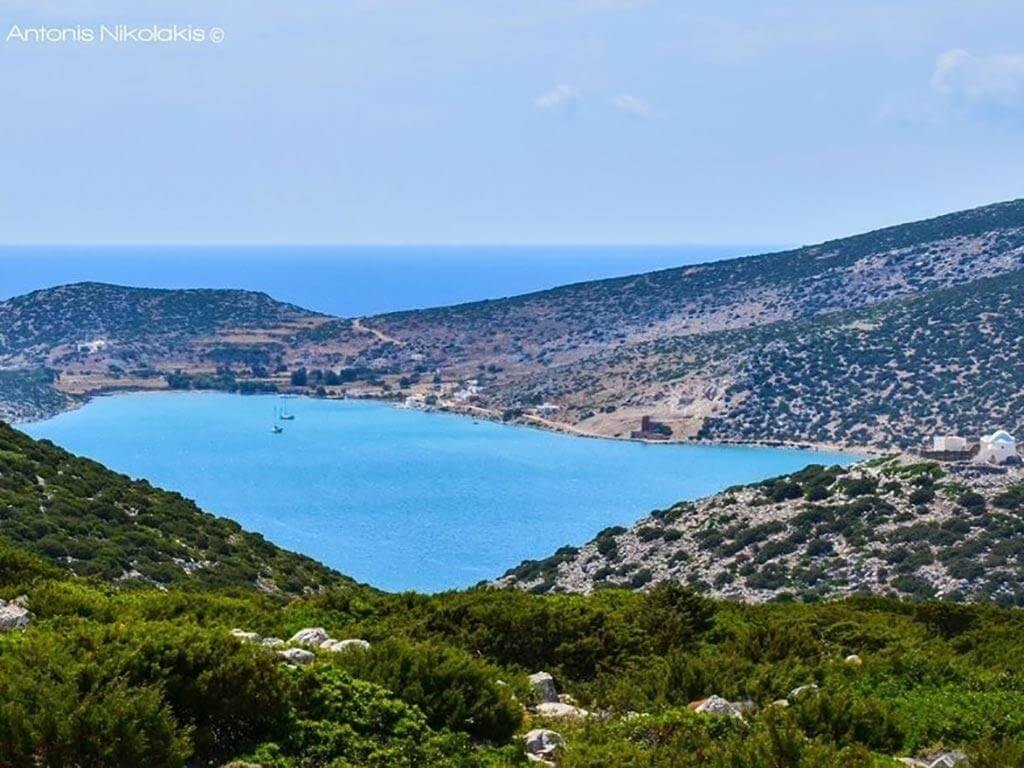
Vathy
Vathy is nestled in an almost closed-off bay with an opening of just 50 meters, creating a secluded and picturesque atmosphere. It is divided into two parts: Exo Vathy, located at the mouth of the bay, and Mesa Vathy, situated on the inlet of the bay. Mesa Vathy is characterized by its serene surroundings, with lush fields, a quaint church, a welcoming tavern offering delicious local cuisine, a handful of traditional houses, and a small dock dotted with a few fishing boats. Visitors can reach Exo Vathy by asphalt road and then continue towards Exo Vathy along a passable dirt track. Alternatively, one can arrive by boat.
BEACHES
Astypalea, with its rugged terrain, boasts numerous coves and several beautiful beaches. The crystal-clear waters and the azure sea will mesmerize you. Most beaches offer ample shade from large welcoming tamarisk trees, while organized beaches provide sunbeds and small shops for essentials. During the summer months, tourist boats offer daily excursions from Pera Gialos and Maltezana to the secluded beaches of Vatses, Kaminakia, and Agios Ioannis, to the nearby islets of Koutsomytis and Kounoupa, and to the impressive Red Rock.
Beaches worth your attention: Livadi, Agios Konstantinos, Vatses, Kaminakia, Agios Ioannis, Ble Limanaki, Schinontas, Tzanaki, Plakes, Chrysi Ammos, Steno, Mamounia, Koutsomytis, and Kounoupa.
PLACES TO VISIT
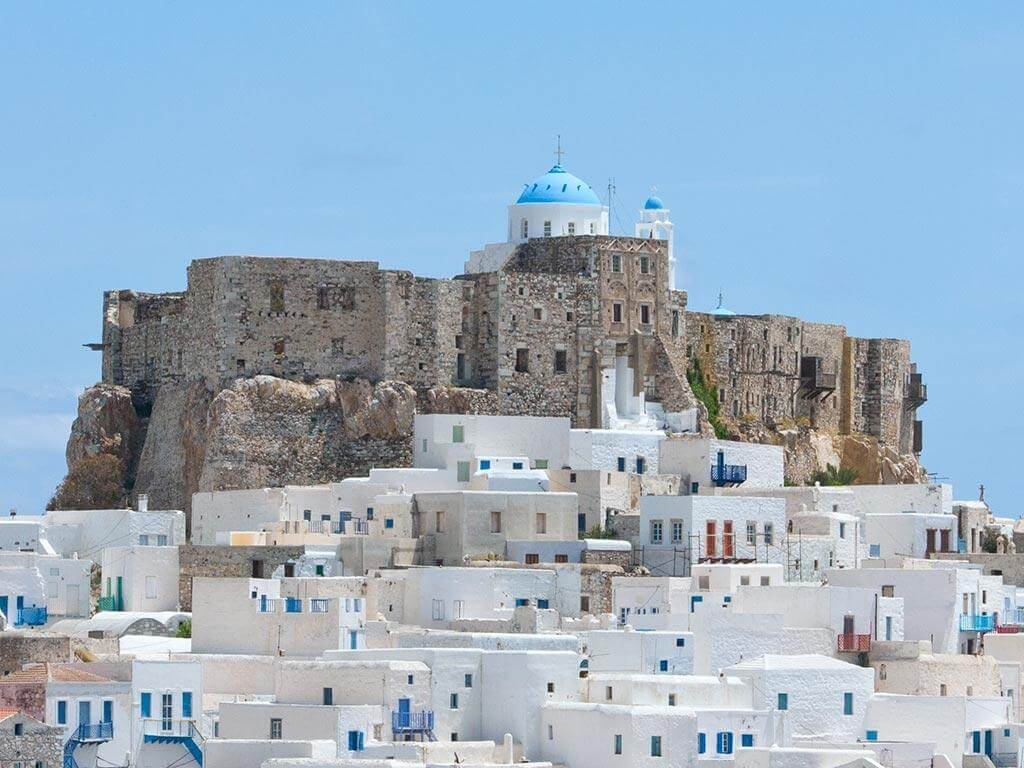
The Venetian Castle of Querini Stampalia
It is the island’s most important sight. Situated on Chora’s loftiest point, on the remains of the island’s ancient acropolis and of the Byzantine castle, it was initially constructed by Giovanni I Querini in 1207 and completed by Giovanni IV Zanachi Querini in 1413. The castle offered protection, which resulted in an increase of its population, reaching 4,000 inhabitants.
The strongly built castle with the narrow, cobblestone alleys also included two towers, one at the gate where the feudal owners resided and one with four storeys on the south side, the so-called “Sarai”. The abandonment of the castle began in 1830, when piracy was no longer a threat and by 1948 it was completely deserted.
You can read here more information about the history of the Castle.
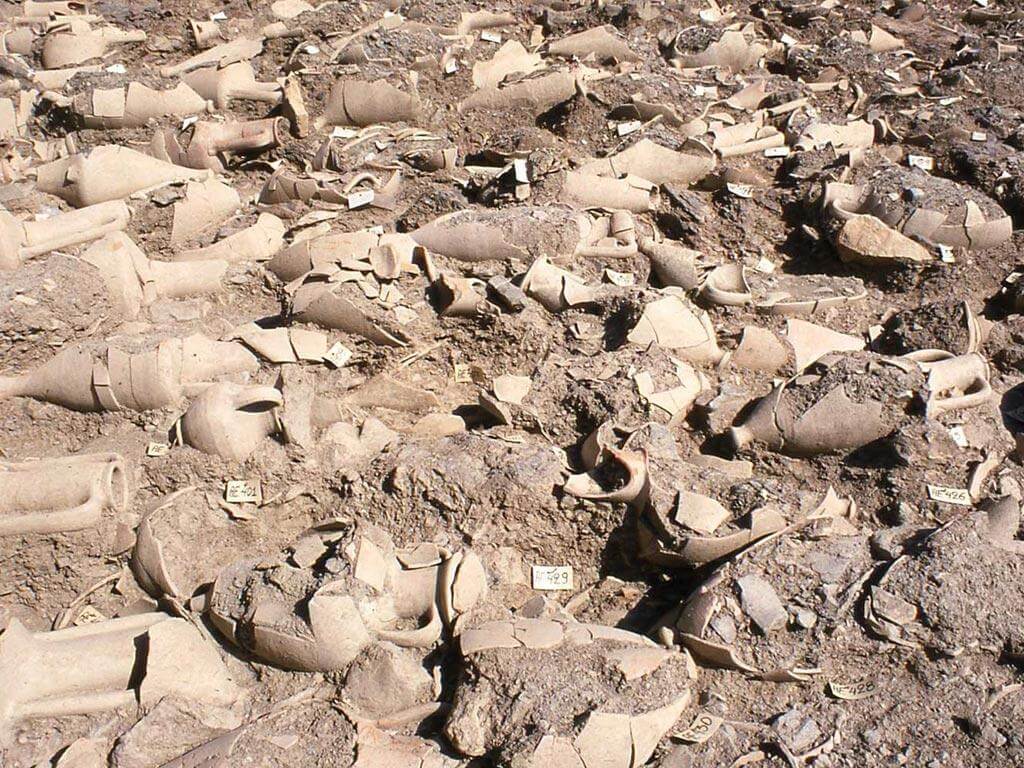
Infantile Graveyard Excavation at Kylindra
The infants’ cemetery on Astypalea is the largest ancient children's cemetery in the world. According to the 22nd Ephorate of Prehistoric and Classical Antiquities, this ancient cemetery was used from the Late Archaic up to the Roman times (600 b.C.-200 A.D.).
As was usual for ancient Greek cemeteries, the dead infants were placed in clay pots. Once the baby or infant had been laid inside, the door was replaced and the pot was buried in a small pit. The area of the cemetery is still being excavated by 22nd Ephorate of Prehistoric and Classical Antiquities.
There have been excavated more than 2,700 burials to date and one such vessel is on display in the Archaeological Museum of Astypalea.
You can read here more information about the Infantile Graveyard Excavation at Kylindra.
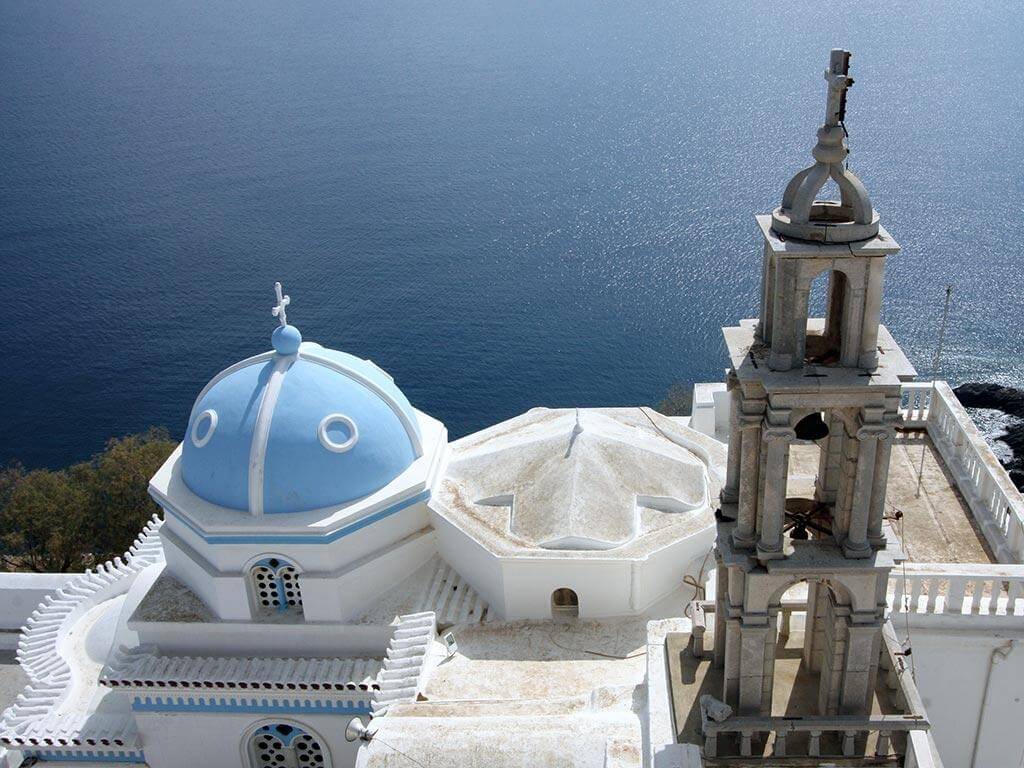
Panagia Portaitissa and Ecclesiastical Museum
Near the Venetian castle of the island there is the church of Panagia Portaitissa, one of the most beautiful in the Dodecanese. The church was built in 1762 by Saint Anthimos after nine years of construction and is the religious center of the island. It is dedicated to the Virgin Mary of the Iberian Monastery of Mount Athos. During your visit, it is worth noticing the wooden Chancel Table and the wooden carved chancel screen dated back in 1766 as well as the silver-plated icon of Panagia Portaitissa. Near the church you will also find the Ecclesiastical Museum of Astypalea, which exhibits precious and rare religious relics. Findings on display include a wooden, 17th century epitaph, a 15th century icon of Christ and rare heirlooms of unique craftsmanship.
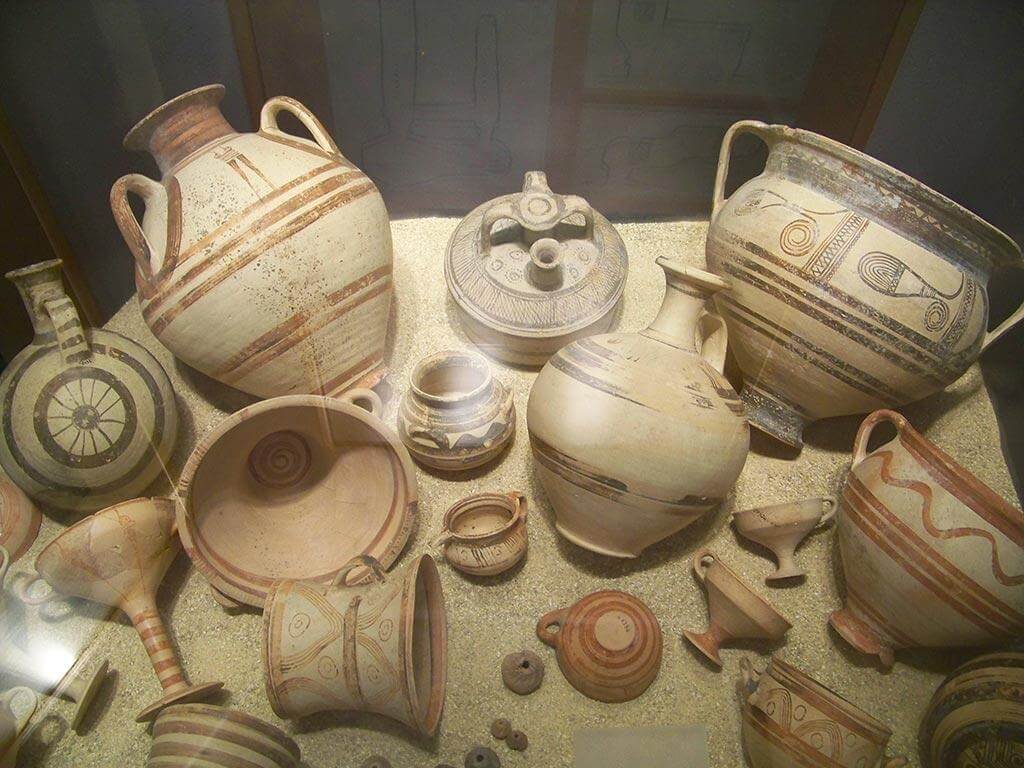
Archaeological Museum
The Archaeological Museum is located at Pera Yalos village and housed at a ground-floor hall granted to the Hellenic Ministry of Culture by the Ecclesiastical Charity Fund of Astypalea. The museum was inaugurated in September 1998 and exhibits findings from prehistoric up to medieval times. According to the 22nd Ephorate of Prehistoric and Classical Antiquities, some of the exhibits are: a marble coat of arms of the Querini, clay vessels, jewellery and tools from Mycenaean tombs, silver coins of the Classical Period, inscriptions from the island’s shrines, findings of the Hellenistic and the Classical period as well as clay vessels of the Geometric up to the Roman times. The museum is open daily except for Tuesdays, with an entrance fee of €3.
ACTIVITIES
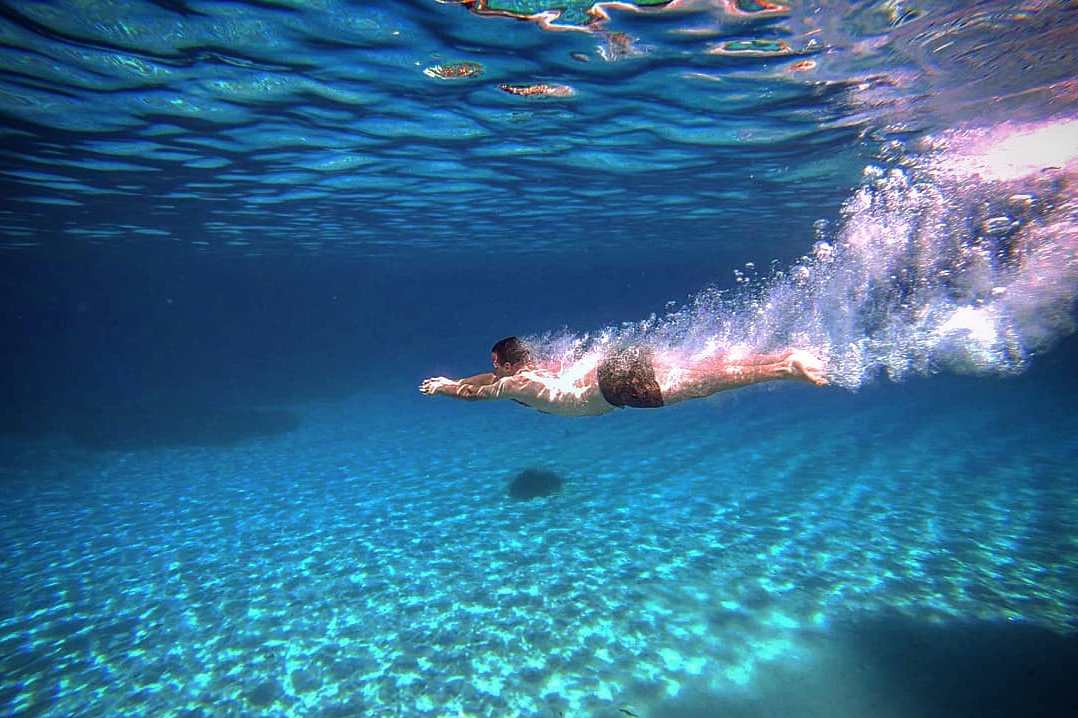
Dives into the crystal-clear waters
Astypalea offers beaches for all tastes, from small secluded coves to expansive stretches of sand, and from fully organized ones with sunbeds and beach bars or tavernas, to completely deserted ones. However, the common characteristic of all is their crystal-clear, pristine waters, which will refresh you with each dive. It's worth visiting many different beaches, as each one will offer you unique experiences.
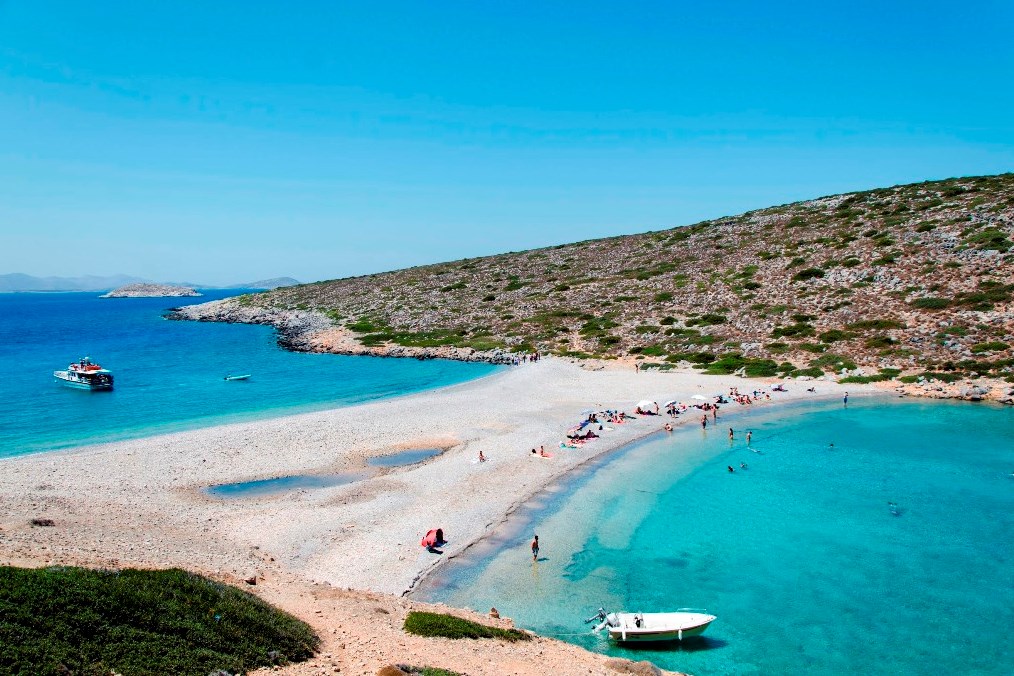
Boat excursions
During your stay in Astypalea, it's worth making a boat excursion departing daily from the ports of Pera Yalos and Maltezana to the secluded islets of Koutsomytis and Kounoupa, where beautiful beaches are formed with azure, crystal-clear waters, making a stop at the impressive Red Rock. Additionally, there is the possibility for daily rental of speedboats or inflatable boats with a skipper.
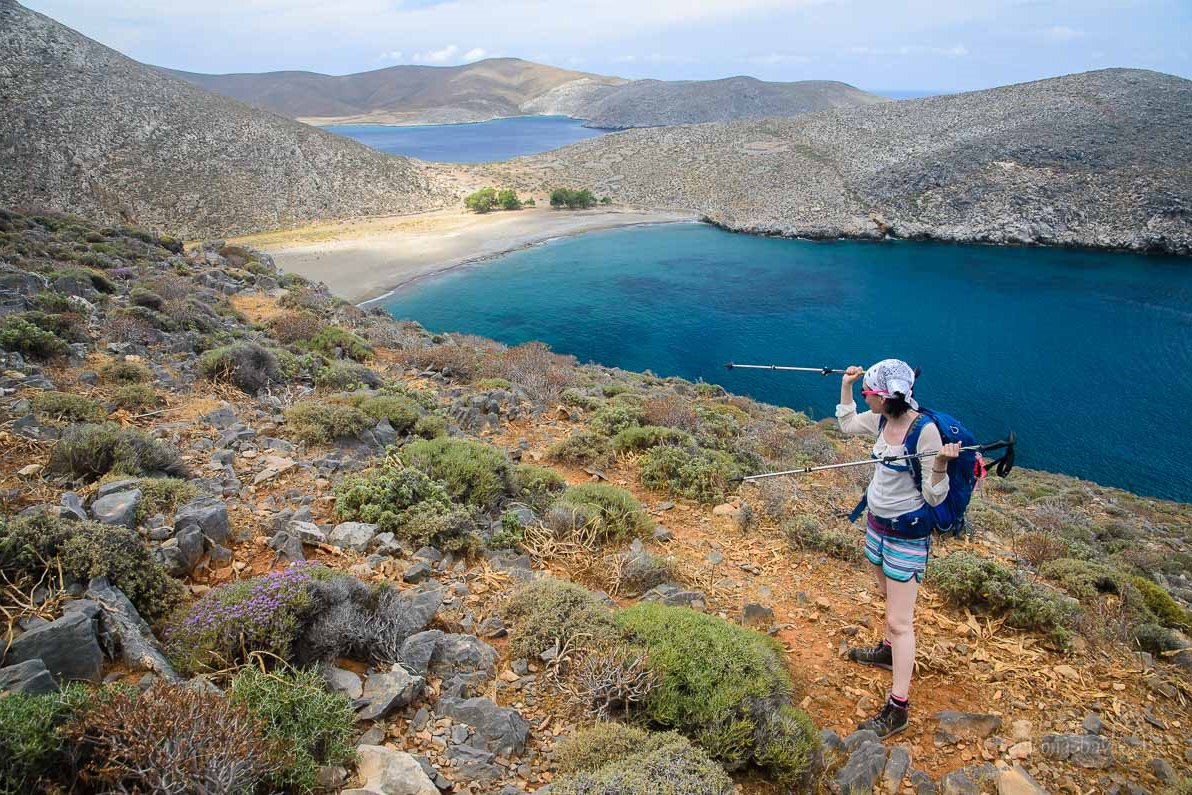
Hiking
Hiking in Astypalea is the ideal way to connect with nature and discover every corner of the island. Each season offers different images, colors, and scents, inviting you to explore them. Moreover, hiking allows you to connect with the rich history of the island. If you find yourself on the island on a Sunday, it's worth joining one of the excursions organized by the hiking club "Pardalo Katsiki" and getting to know Astypalea through the eyes of the locals.
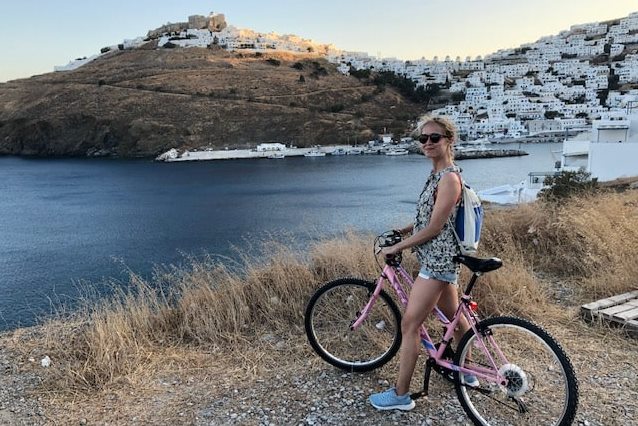
Cycling excursions
In Astypalea, you'll find small coastal inclines, while for the more adventurous, there's the inland area where the slopes are steeper. Whether you're in a competitive mood or simply want to explore, you can now discover the alternative side of Astypalea with your bike against the backdrop of the endless blue of the Aegean. It's a destination perfect for pedaling and plenty of sea! Rent the mountain or e-bike of your choice today and enjoy unique moments.
FESTIVE CELEBRATIONS
It’s often said that you get to truly know a place, once you’ve met the people who call it their home. Once you hear their stories and share their happiness. Once you’ve spent time together and put every day worries behind you.
The festive celebrations of religious anniversaries give the visitors of the island a great opportunity to witness the true identity of Astypalea. Hospitable and openhearted by nature, Astypaleans, will instantly make you feel welcome and at home. Eager to share their joy, they won’t think twice before inviting you to join in the celebrations.
In every fair, and before you even realise it, you'll find yourself mingle with the group of people around you and dance to traditional songs until, most likely, the early morning hours. And by that time, you will have picked up the Astyapalean 'sousta' steps, a rhythmic dance that's very popular in all fairs. You can always count on one of the locals to show you the steps if you’re unsure, but by the time the sun rises, you will have mastered them and will be able to lead the dance in the next fair - always, only a short while away.
Read here more information about the Astypalean Festive Celebrations.
LOCAL GASTRONOMY
Astypalea's cuisine is renowned for its blend of sweet and savory flavors, a combination that becomes evident in the famous "pougià." The enjoyment of good food is an essential component of the island's culture and travel experience. Every day in Astypalea is a celebration with traditional flavors and unique local products that have been passed down through generations, enriched with all their secrets from the Neolithic era to the present day.
A prominent position in Astypalean cuisine is held by "zaforá" (saffron), also known as "crocus." Saffron is the stigma of the flowers of the Crocus sativus plant. The delicate crimson threads of saffron provide that characteristic taste and deep yellow color to the dishes.
In addition to saffron, Astypalea produces many other unique products, such as particularly flavorful cheeses, traditional rusks, aromatic thyme honey, and sweet potatoes.
Read here more information about saffron as well as a traditional Astypalean recipe that combines fresh fish with saffron.


